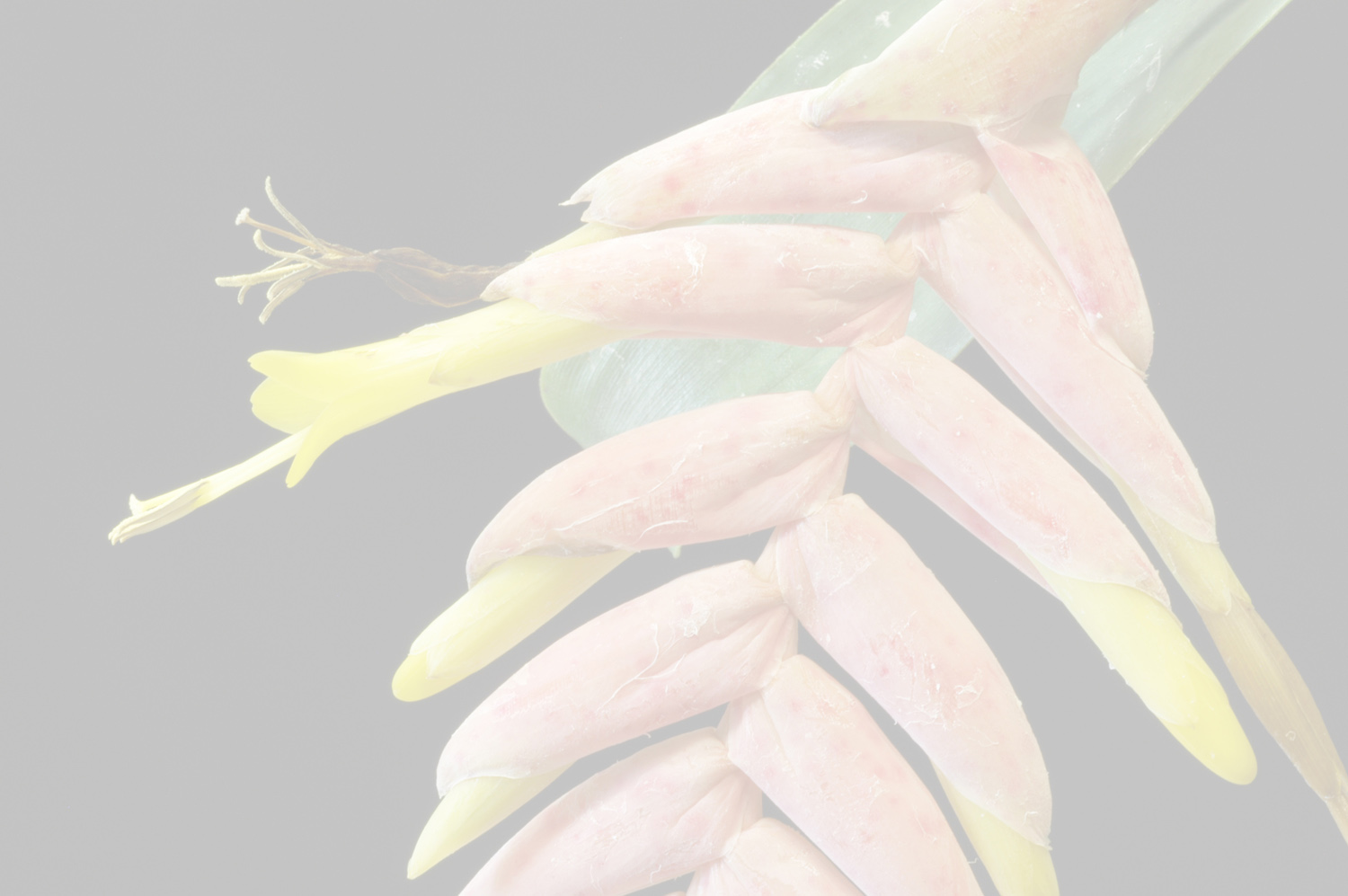Vriesea fenestralis Linden & André
Taxonomic Change:
- TYPE: in Brasilia, 1872, cult.Linden Hortus s.n. (holotype: LG [missing?]);
Lectotype: Ill. Hort. 22: pl. CCXV. 1875 —See Moura et al. 2013 p. 330
Literature references:
*move your mouse pointer over the page numbers to see comment
Comments:
- Comments. The species was introduced to living collections in Europe around 1872 by M. Linden, and was described as Tillandsia fenestralis by André in 1875, based on a sterile specimen. A few years later, Morren (1884) redescribed it using floral traits of a plant that had flowered in 1883. This plant was from the seeds sent to him by Glaziou in 1856 of a Vriesea sp. ‘‘du Pico de la Tinca’’ (Pico da Tijuca, Rio de Janeiro). This material was not been found during our visit to the herbarium of the Université de Liège (LG), Belgium, where all of Morren’s collections are deposit- ed. The epithet comes from the Latin fenestra, and was given to the species in allusion to the ornamentation of leaves with vertical and horizontal lines that resemble ‘‘windows’’. The choice of illustration by André (1875) as the lectotype followed the articles 9.2 and 9.11 of the ICN. Although the illustrated material was sterile, the typical form of the rosette and characteristic ornamentation of leaves (trans- verse and vertical striations, beyond the rounded macules found near the apex of the lamina and near the sheath) leave no doubt about the identity of the taxon, as can be seen in the commentary of Hooker (1886): ‘‘... attracted the attention of Horticulturists by its bold and peculiarly colored foliage’’. Vriesea hamata was described by Smith (1941) as closely related to Vriesea fosteriana L.B. Smith. Later, Smith and Downs (1977) transferred the species to the synonymy of V. fenestralis, which is accepted here. The names Vriesea fenestralis var. germinyana hort. F. Sanders ex Wittmack (Garten- flora 42: 305. 1893), Vriesea fenestralis var. germinyana hort. F. Sanders (Revue Horticole 65: 202. 1893), Vriesea fenestralis var. varie- gata hort. Duval ex Wittmack (Gartenflora 42: 307. 1893) and Vriesea x fenestrata D. Bois (Revue Horticole 66: 285. 1894) constitute nomina nuda
Distribution and Habitat. Since the 19th century the species has had important scenic interest and is highly appreciated by collectors primarily due to the ornamentation of their leaves. Nevertheless, the species is poorly recorded in herbarium collections. Occurs in Brazil in the states of Rio de Janeiro and Espírito Santo, in areas of humid forest, from sea level to 1000 m. In addition to the locations mentioned in the material studied, the species can also be seen in their natural habitat in the municipalities of Cachoeiras de Macacu and Magé. Baker (1889) and Mez (1894, 1896) have reported the occurrence of the species further south, in Paraná , but it was never confirmed despite the intense collection activity in this region. The latter author reported seeing the dry material in the Herbarium of Liège (LG). Smith (1955) and Smith and Downs (1977) challenged the occurrence of the species in Paraná. In our survey at Liège Herbarium, we also did not find any material assigned to species that make mention of Paraná. There could be some reference to the species in this state in any of Linden’s catalogues, which were not checked. If so, it has been probably from cultivated material.
According to the IUCN criteria B1ac (i, ii, iii), Vriesea fenestralis is endangered (EN) (IUCN 2008). —See Moura et al. 2013

